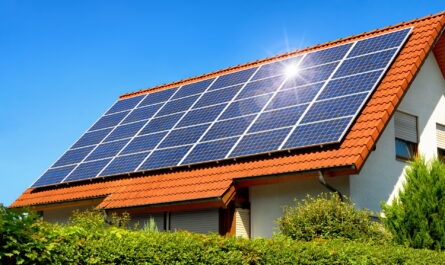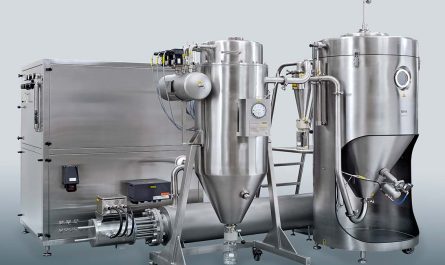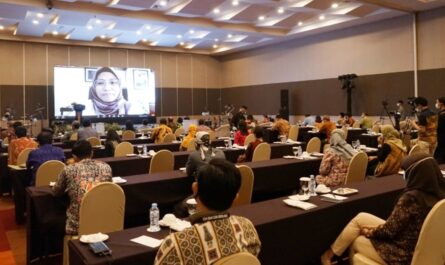The small wind turbines market in Europe, Middle East and Africa (EMEA) region has been witnessing steady growth over the past few years. With increasing focus on renewable energy sources and off-grid power requirements, small wind turbines offer an attractive economical and eco-friendly solution.
Market Overview
According to a recent report by Transparency Market Research, the EMEA small wind turbines market was valued at over USD 500 million in 2018 and is expected to grow at a CAGR of 6% during the forecast period of 2019-2027. Small wind turbines with a capacity of up to 100 kW are considered to fall under this category.
Residential sector has emerged as the largest application segment, driven by growing rural electrification in developing countries and increasing installation of small wind turbines for off-grid homes in Europe. However, commercial and industrial applications are also gaining notable attention from facility owners looking to supplement their conventional power supply or achieve self-sufficiency through renewable sources.
Germany remains the powerhouse in the EMEA small wind turbines market with over 30% revenue share in 2018. The country offers supportive incentive programs and feed-in-tariffs that have boosted installations over the years. However, other regions like UK, France, Middle East and African nations are displaying growing commitment towards distributed wind energy projects.
Power Curve Analysis of Small Wind Turbines
The maximum power output of small wind turbines highly depends on the wind speed at the installation site. Most turbines have a rated power between 1 kW to 20 kW, which is achieved at a specific rated wind speed ranging from 11 m/s to 15 m/s.
Below is an analysis of typical power curves for small wind turbines:
– At cut-in speed (3-5 m/s), the turbine begins to spin but does not produce any usable electricity.
– From cut-in speed to rated wind speed, power output rises sharply according to the third power law – as wind speed triples, power output increases eight times.
– At rated wind speed, the turbine produces its maximum/rated power output. The output is then gradually reduced to regulate speed and protect components.
– Beyond cutoff or furling wind speed (25 m/s), automatic mechanisms curb the output or bring the turbine to a halt to avoid damage from excessively high winds.
Manufacturers are continuously working on turbine designs to achieve higher starting wind speeds, cut-in speeds closer to the rated point, and maximum power extraction at lower wind speeds. This helps improve performance and energy yields.
Key Drivers Boosting EMEA Adoption
There are multiple drivers propelling the EMEA Small Wind Turbines market in the EMEA region:
Favorable Government Policies
Feed-in tariffs and net metering programs in many countries incentivize installation of renewable energy systems. Europe has set an ambitious target of supplying 20% total energy needs from renewable sources by 2020.
Rural Electrification
Over 800 million people in Africa lack access to electricity, making decentralized renewable systems an attractive option. Small wind fills an important need for off-grid homes and communities.
Cost Competitiveness
With the dropping prices of wind turbines, the levelized cost of energy from small-scale projects is now often cheaper than diesel-based generators. The payback period has reduced to 3-5 years.
Energy Independence
The market is witnessing growing customer preference for self-sufficient energy solutions driven by desires of autonomy and protecting from fluctuating grid power rates.
Integration with Storage
Pairing wind turbines with batteries allows capturing and storing surplus power for nighttime or low-wind hours, improving viability and usability of such systems.
Environmental Commitments
Countries and corporations are emphasizing use of carbon-neutral power sources to curb emissions. Small turbine installations help achieve sustainability goals cost-effectively.
While these macro drivers point towards a bright outlook, variations exist across regions depending on local infrastructure, policies, financing models andacceptance levels. For EMEA small wind power to reach its full potential, a well-rounded strategy is imperative. This includes efforts on the part of developers, regulators as well as communities. With the industry working cohesively, the decentralized wind segment has strong potential for widespread adoption over the coming decade.
Regional Market Assessment
Let us assess the present status and growth opportunities in some major EMEA regions:
Germany
As the pioneering European market for small wind, Germany boasts the highest per capita installations. However, post-phase out of FITs, the growth has plateaued. Innovation will be key to revive demand.
UK
Policy uncertainty has stalled additions but the adoption is anticipated to revive with realization of competitive levelized costs. Offshore small farms are receiving attention.
France
The market landscape is evolving positively with new regulatory push. Municipal projects for public facilities will play a role in development along with rural distributed systems.
Italy
Despite being a solar PV leader, wind power is yet to make major headway. Amendments to restrictions can unleash small wind’s untapped capabilities.
Nordic Nations
Iceland, Norway and Denmark leverage wind excellence. Rising self-consumption applications present opportunities in new segments.
Middle East & Africa
Massive power access issues make the regions ripe for renewables expansion. Successful pilots prove viability; scale-up hinges on financing mechanisms.
Overall, with the right policy and business frameworks, the small wind segment is capable of notching up sizeable additions and playing a substantive long-term role in the EMEA region’s clean energy mix. Its distributed nature and flexible applications suit diverse localized needs.
Key Players
Some major players operating in the EMEA small wind turbines market include Northern Power Systems, Ghrepower, Primus Wind Power, Bergey Wind Power, Kingspan Group and Xzeres Wind. These companies offer a range of hardware from micro turbines to 10 kW machines as well as integrated solutions.



